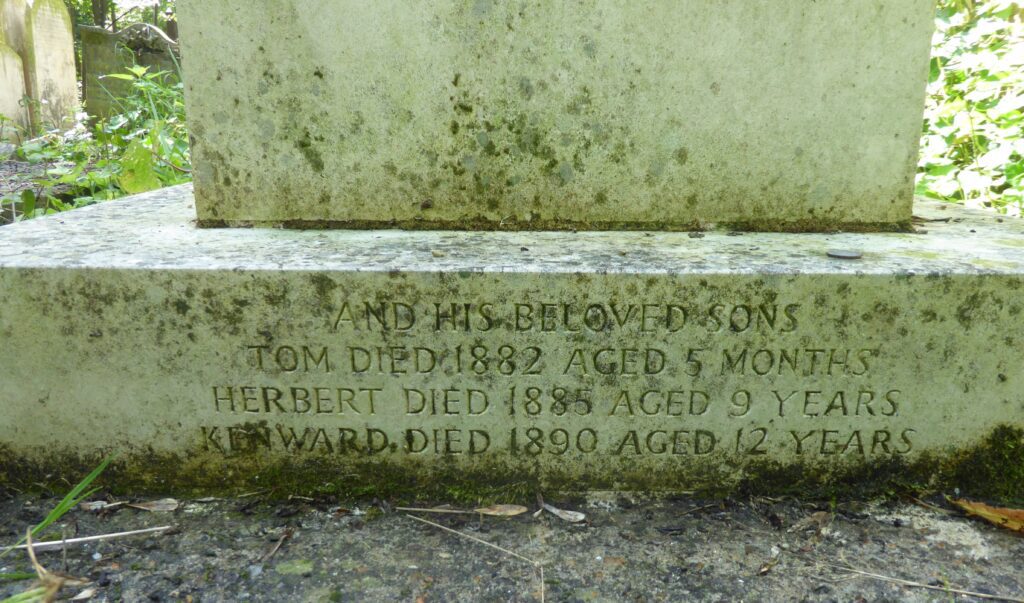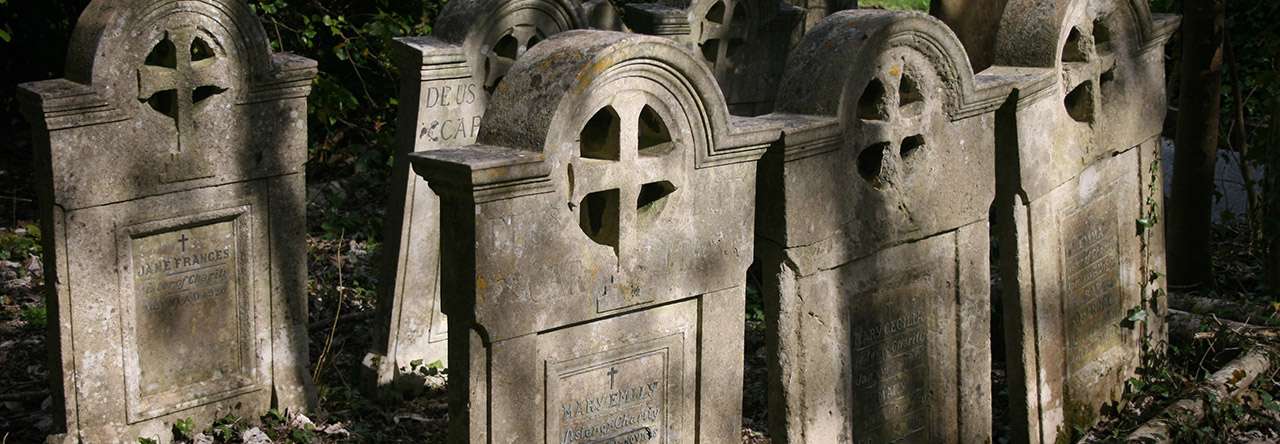In the late 50s and early 60s Chester Children’s Library boasted many volumes on the lives of worthy Victorians, and there I became acquainted with Florence Nightingale, Elizabeth Fry, Josephine Butler, Thomas Barnardo, William Booth. I recall illustrations of ladies in voluminous dresses and gentlemen with voluminous beards ministering to the needs of the sick, the imprisoned, the orphaned and the destitute. I was both fascinated and horrified by that extraordinary world, which was just within touching distance for my grandparents had been born towards the end of it, with its monstrous inequalities of wealth and income, of health and opportunity. Fascinated too by those individuals who with courage, compassion, and abounding self-confidence, did not wait for a tardy, lacklustre government to act, but took it upon themselves to tackle society’s ills.
I learned more of Doctor Barnardo when my primary school issued us all with papier mache collecting boxes shaped like small cottages, with thatched roofs and roses round the door painted in bright primary colours.
Thomas Barnardo had begun studying medicine at the London Hospital in 1866. The following year he followed the example of other philanthropists when he established a Ragged School at Hope Place in the East End providing free basic education for poor children. But 1866 had also seen a cholera outbreak which increased the number of orphaned and destitute children on the streets of London to 30,000. Many of the children coming to the Ragged School were not only poor but homeless, and doubtless as much attracted by the warm fire and the free meal which the school provided as by an introduction to the three Rs.
Jim Jarvis, a homeless boy who attended the school, took Barnardo to see “the lays,” places where children slept in gutters, under market stalls, and on roof tops huddled against the chimneys for warmth. Barnardo abandoned his medical training to concentrate on helping these children and in 1870 opened his first boys’ orphanage in Stepney. The number he could accommodate was limited and a year later he had to turn away John Somers, an eleven-year-old who had already lived on the streets for four years. Days later the child was found dead of malnutrition and exposure. Barnardo vowed that he would never turn another child away. By the time of his death in 1905 he had raised the money to establish 122 homes which had helped 60,000 children.
Alongside the boys’ homes Barnardo established a “Babies’ Castle” in the countryside at Hawkhurst in Kent. After he married in 1873, he and his wife, Syrie, opened the Girls’ Village in Barkingside, where girls were housed in groups with a housemother in “cottage homes.” By 1900 the village with its own school, hospital and church accommodated 1500 girls in 65 cottages.
Eager that they should experience a family environment, Barnardo also assisted the fostering of children, and with Syrie’s help he established a Rescue Home supporting those who had been driven to child prostitution and protecting them from further sexual exploitation.
The work of Dr. Barnardo’s Homes continued after his death with its watchword “no destitute child ever refused admission.” By the 1960s however the availability of efficient contraception, the greater acceptability of single parenthood, and the growth of the welfare system meant that fewer children were taken into the homes. With the emphasis moving towards fostering, adoption and supporting children in their own families rather than direct care, the last of the Barnardo’s orphanages closed in 1989. Today the charity works with vulnerable children facing sexual and domestic violence, FGM, child trafficking and drug abuse, and offers support to young carers.
Though the books I read and the stories we were told when we picked up our collecting boxes painted a glowing portrait of Barnardo and his work, there were always critics. He was accused of kidnapping children who had parents, taking them away without their parents’ permission. As a result, he appeared in court 88 times. He freely admitted this accusation, reasoning that the child’s welfare overrode any parental rights, that children should be removed from violent and abusive homes, and that the end justified the means. He was invariably exonerated by the courts.
Other detractors claimed, possibly correctly, that the photographs he produced for fund raising campaigns, portraying children before and after their admittance to the homes, were stage managed, doctored to make the changes appear more dramatic.
Most seriously, Barnardo’s was one of several charities involved in government schemes to send children to Australia and Canada. Whilst there is no doubt that Barnardo saw this as a means of rescuing children from a corrupting environment and securing for them a new healthy life with jobs and prospects, his good intentions were misguided, and many children faced exploitation as cheap labour, harsh conditions, and abuse.
Finally, there were reports of unsanitary conditions, badly managed homes, and children being cruelly treated. An orphanage is surely no one’s idea of a perfect environment for young children, and yet, the alternatives for many of Barnardo’s children were cold, hunger, abuse from drunken parents, child prostitution, death from exposure. Even for less extreme cases the orphanage could be a haven. My paternal grandfather, whom I never knew, was sent to an orphanage (not a Barnardo’s, but the Hull Seamen’s Orphanage) following the death of his father. The regime was harsh: if the boys wet the bed they were beaten, the girls were made to parade around the room with their mattresses strapped to their backs. And yet, my father told me, my grandfather always spoke highly of the shelter which the home provided, of the education he was given, of the lessons in health and hygiene; and from games at the orphanage he developed a lifelong love of cricket. All these things he tried to pass on to his own children, and my father and his brothers were taken every year to the Open Day at the orphanage. And if my father’s inherited obsession with immaculate fingernails seemed a little excessive to me as a child, still my Barnardo’s box always weighed heavy with his loose change.
I doubt if today children’s libraries stock eulogising, uncritical hagiographies of Victorian philanthropists, and if I read those books again now I might find their tone cloying. Modern accounts of those nineteenth humanitarians do not spare them accusations of conceit, arrogance, paternalism, and dogmatism. And yet they were brave, good people who gave of their time, money, and energies, faced down criticism, sneers and personal attacks to make their world a little better for others.
Thousands of people filed past Barnardo’s coffin as it lay in state for three days in Limehouse, and lined the streets as it passed through the East End to Liverpool Street Station to be transported to Barkingside. Barnardo had chosen to be buried at the Girls’ Village Home, where Syrie later joined him. A magnificent monument designed by George Frampton marks their grave. Today many of the original cottages have been demolished and the land sold to developers so that utilitarian new housing forms an unprepossessing backdrop to the Barnardo memorial, but it still looks out onto the “village green” surrounded by the remaining Victorian cottages now leased to a housing association. And looking across the green and the waterfountain towards the church it takes but little imagination to hear the children’s voices and to catch a glimpse of little girls in button boots, long frocks, and white aprons.

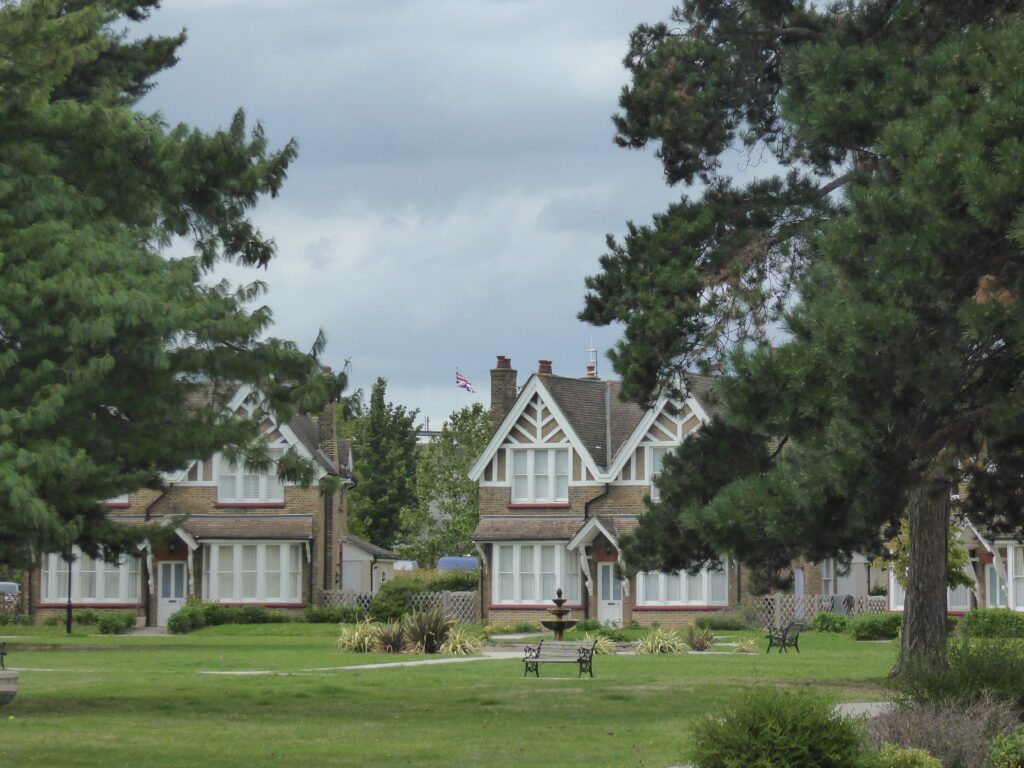
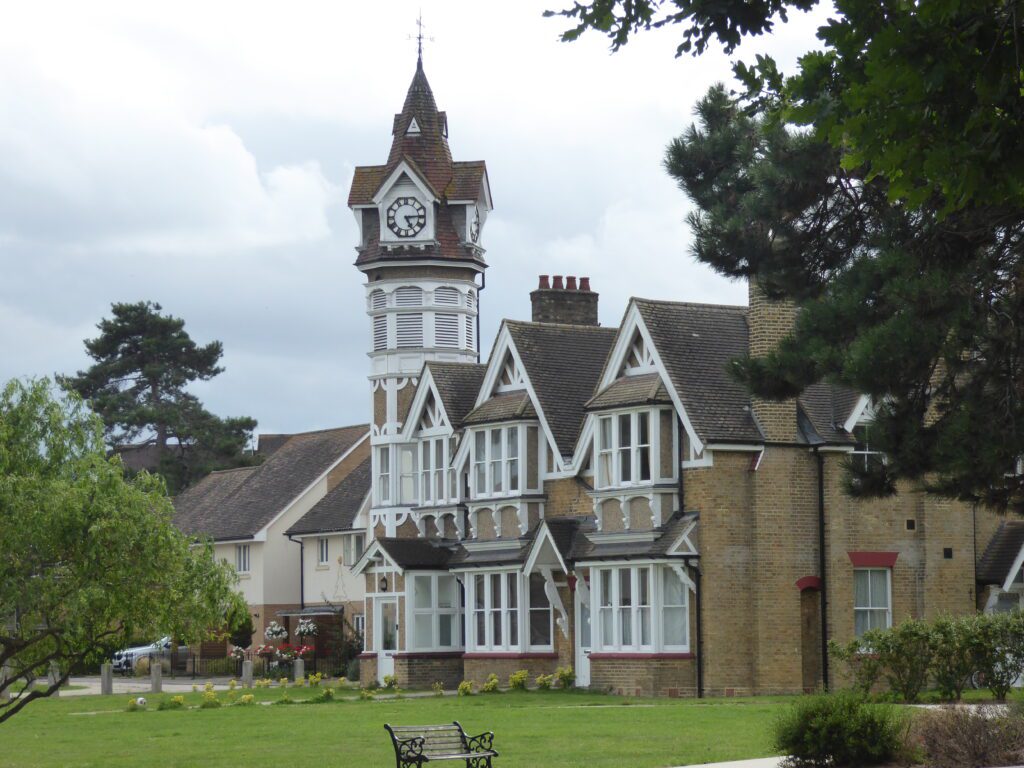
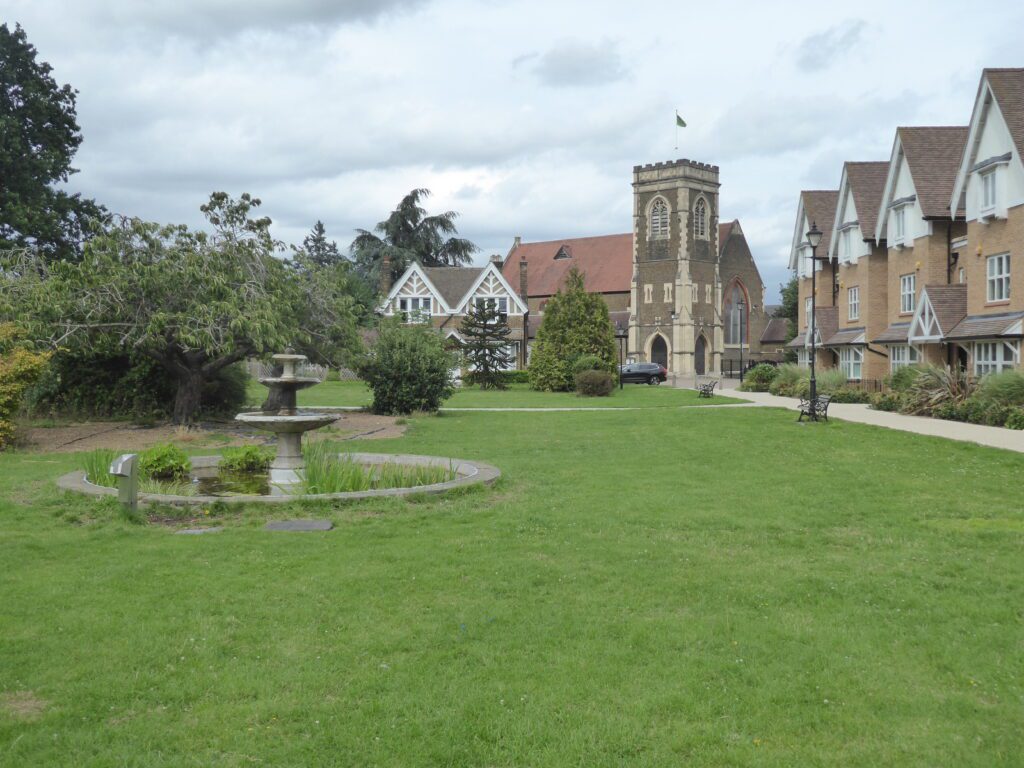

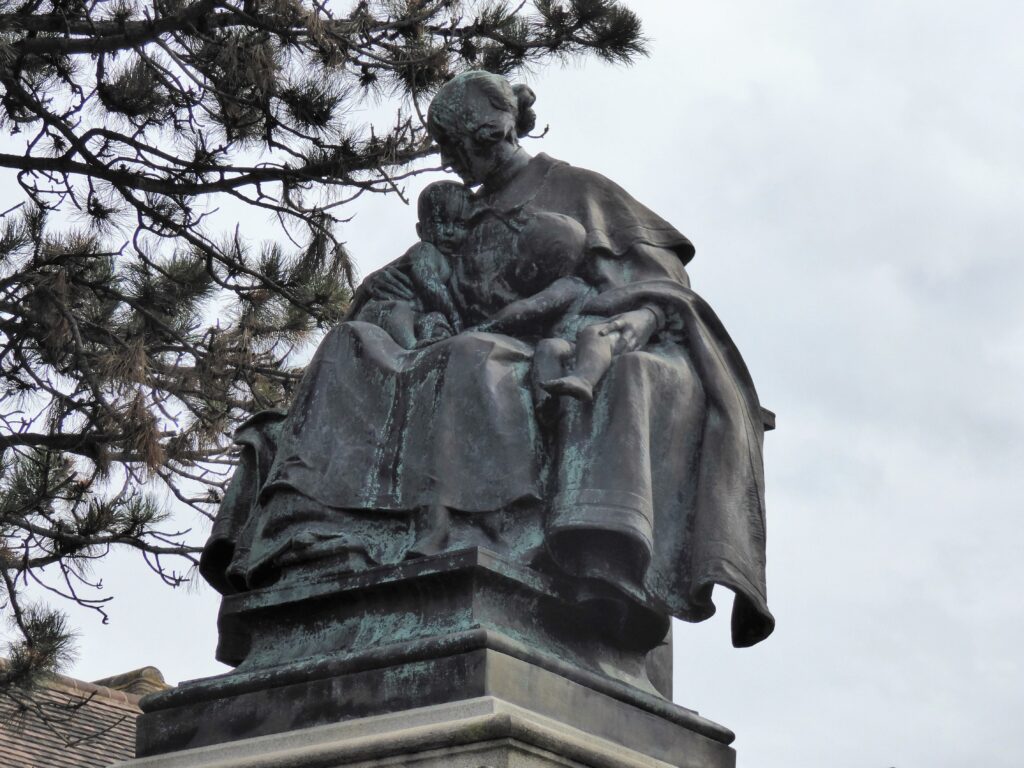
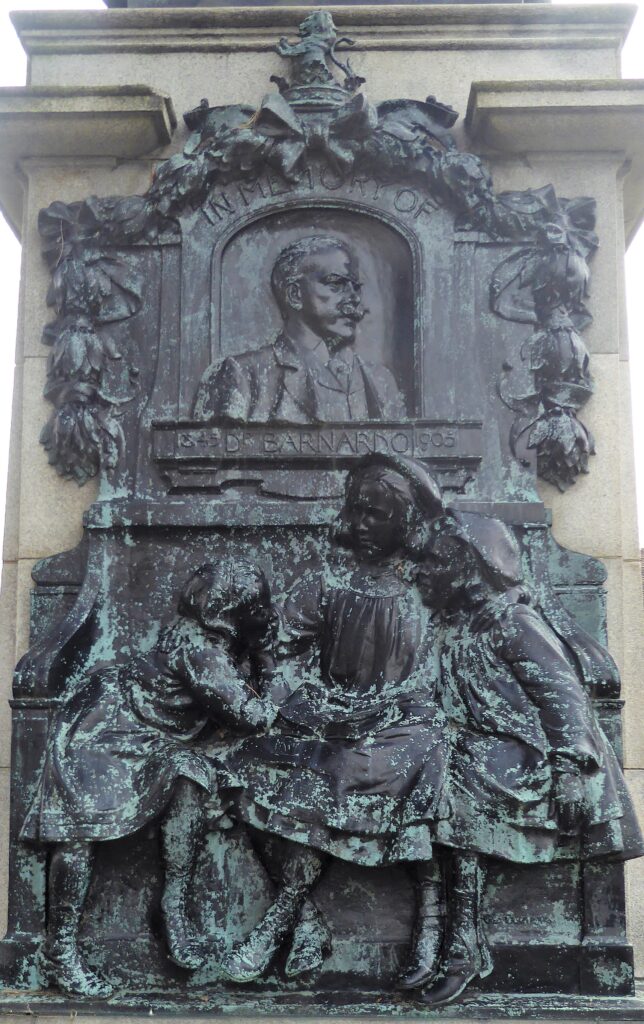
Since 2016 a new memorial in Tower Hamlets Cemetery has commemorated the lives of 500 Barnardo’s orphans who died in childhood and were buried in unmarked graves. Barnardo buried three of his own seven children there too, in graves also unmarked in keeping with the other children. The memorial, designed by Tom Nicholls, is in the form of a pair of hands releasing a sparrow into flight symbolising the care and support of Barnardo’s Homes which enabled children to fly free into the world. Volunteers from the Friends of Tower Hamlets Cemetery have researched the names of the children buried here cross-referencing Barnardo registers with cemetery registers.
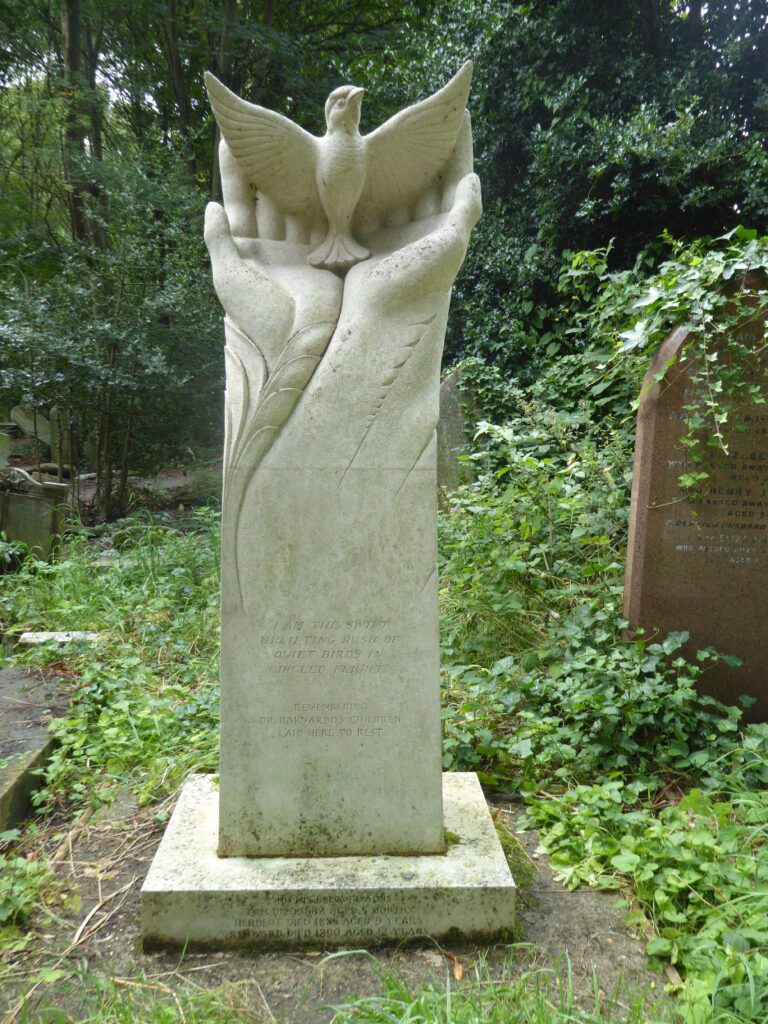
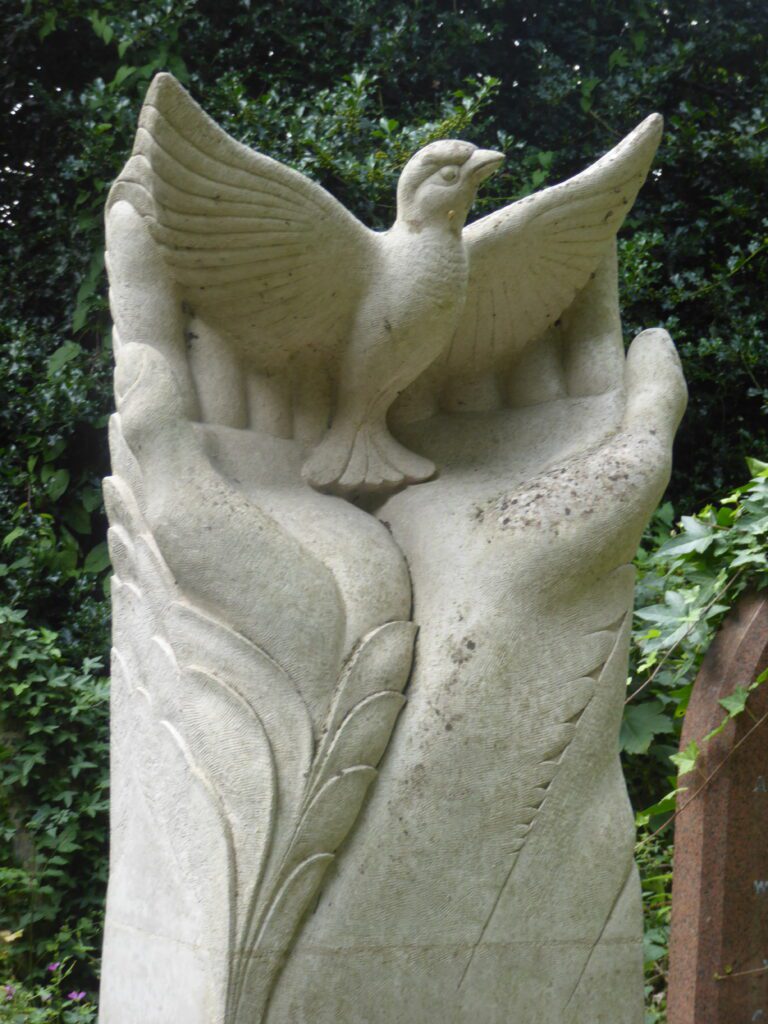

The stone also bears a quotation from a poem of disputed authorship. Contrary to the exhortation, it always makes me cry.
Do not stand at my grave and weep,
I am not there, I did not sleep.
I am a thousand winds that blow.
I am the diamond glint on snow.
I am the sunlight on ripened grain.
I am the gentle autumn rain.
When you wake in the morning hush,
I am the swift , uplifting rush
Of quiet birds in circling flight.
I am the soft starlight at night.
Do not stand at my grave and weep.
I am not there, I do not sleep.
(Do not stand at my grave and cry.
I am not there, I did not die!)
